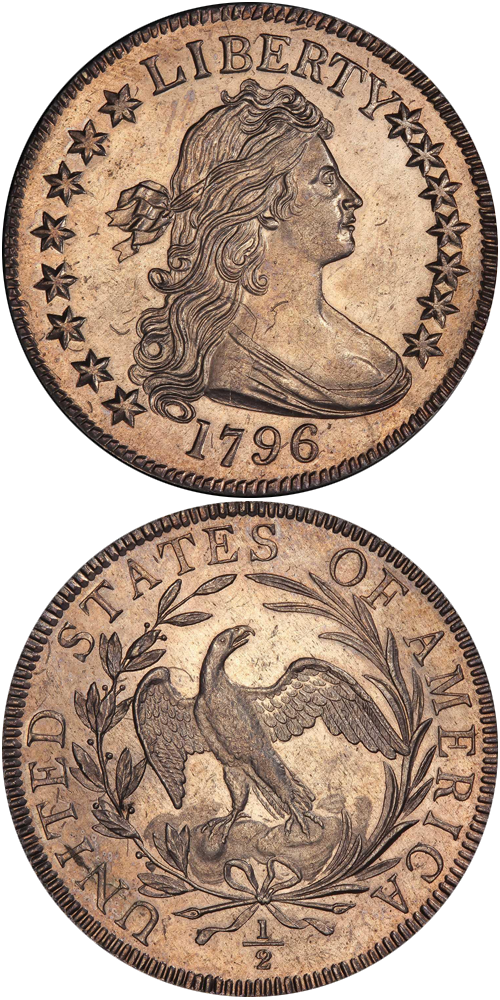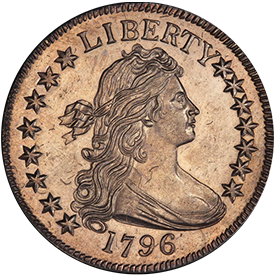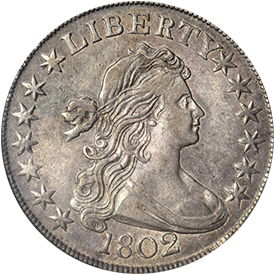After making its debut on the silver dollar of 1795, Gilbert Stuart’s attractive Draped Bust design was extended to the smaller denominations in 1796, including the half dollar. The first type with this obverse featured a small eagle with outstretched wings within a wreath on the reverse.
However, after a very heavy production (for the time) of halves in 1795 amounting to nearly 300,000 pieces, there was not a lot of need for more, and mintages for the next two years totaled a meager 3,918 pieces. This was followed by a four-year suspension, and production of halves did not resume until 1801. When striking resumed, a new reverse picturing a heraldic eagle was used, leaving the tiny mintages of 1796 and 1797 as the only source of the small eagle reverse. The result of course is that the Small Eagle Draped Bust Half is the toughest non-gold coin in the U.S. type set, and ardent demand for the remaining specimens (estimated at between 200 and 300 pieces) has driven prices well into five-figures even for heavily-circulated examples.
After production resumed in 1801, halves of the heraldic eagle reverse design were made through 1807 with the exception of 1804. Approximately 1.6 million of this type were struck, leaving an ample supply for today’s collectors. While 1801 and 1802 are a bit scarcer, most of the other dates are fairly common. One variety, the 1806, Knob 6, Stem not through claw, is extremely rare and commands a hefty price due to the high number of collectors of early pre-1839 half dollar varieties.









